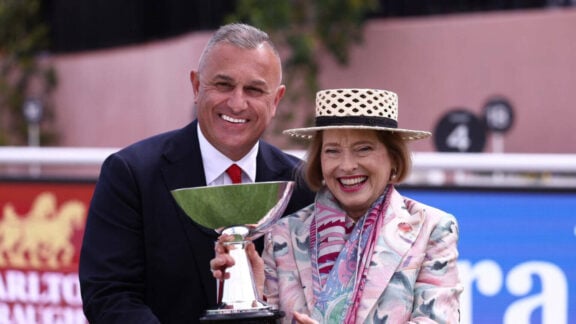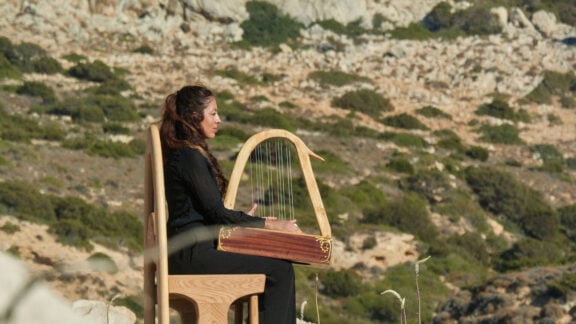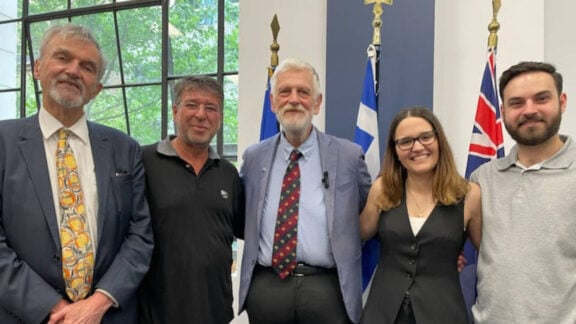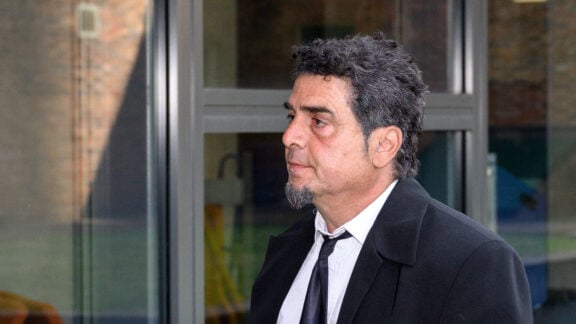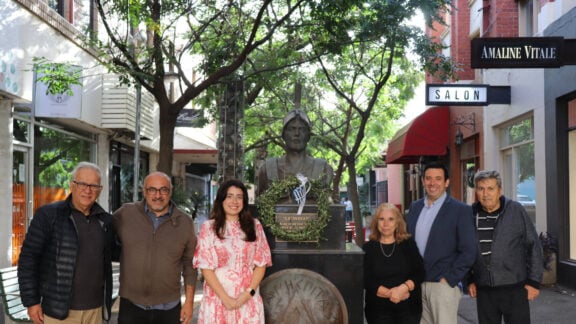It was back in March when Neos Kosmos published animated GIFs featuring the before and after photos of digitally restored ancient ruins, including the Parthenon.
The project began as a collaboration between travel site Expedia, London-based visual content marketing agency NeoMam Studios, 3D visualisation specialists This is Render, and digital experts with the help of archaeologists and architects, who managed to restore missing parts of the relics, bringing facades and marble back to life, erasing years of decay.
In the form of animated online flip books, viewers can see the exterior of the Parthenon restored into its 5th century BCE glory.
Aside from Athens’ main archaeological attraction, one can also admire the true beauty of Egypt’s Luxor Temple, the Nohoch Mul Pyramid and Pyramid of the Sun in Mexico, the Temple of Jupiter and Area Sacra di Largo Argentina (Temple B) in Italy, and England’s Milecastle 39.
NeoMam Studios have done it again by recreating another batch of historical landmarks, collaborating with the My Voucher Codes website, owned by UK price comparison website GoCompare.com. The new list of sites to explore includes the interior of the Parthenon in Attica, the Roman Baths in England, Domus Aurea and the Basilica of Maxentius in Italy, Masada’s Lower Terrace in Israel, the Great Kiva, Aztec ruins in New Mexico and Cambodia’s Angkor Wat.
“My Voucher Codes brought us on board to help them create travel content that would inspire people to go on their next holiday,” Gisele Navarro, operations director at NeoMam Studios tells Neos Kosmos.
“This time, we recreated the interiors of some of the world’s most fascinating ancient ruins to reveal what experts believed they used to look like.
“When looking into the reasons travellers pick their destinations, we discussed visiting iconic heritage locations and we all agreed on one thing: When one thinks of ancient ruins, images of dilapidated steps, half-standing columns and crumbling statues generally come to mind.
“Not the most inspiring of thoughts,” she muses.
“We wanted to change that, and we knew that we had to bring those ancient landmarks back to their former glory. We rebuilt each of them based on our research on what experts believed they used to look like.”
The project involved multiple people: including a researcher, a content writer, a designer, an art director and the managing editor who brought all of them together.
“A big team effort!” says Navarro.
For the Parthenon, NeoMam studios based their ‘re-imagination project’ on multiple sources, including a reconstruction of the statue of Athena made available by Penn State University Libraries.
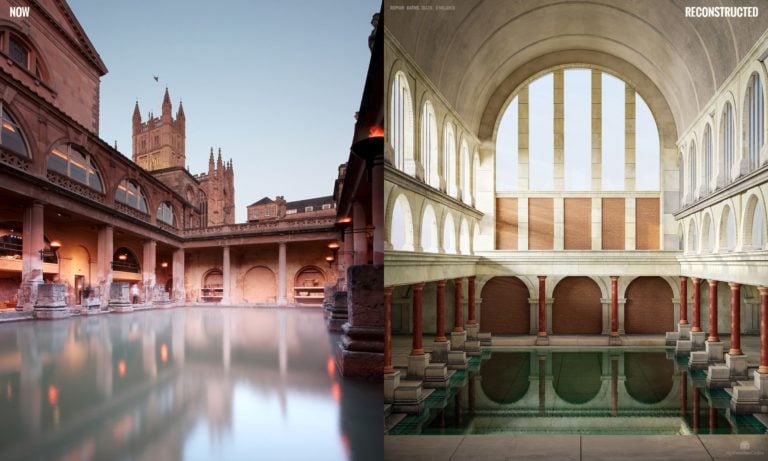
This bathhouse complex is a perfect example of the luxurious – and often ostentatious – Roman lifestyle. Constructed around 70 CE, the baths were an integral part of ancient Roman daily life. Offering citizens the chance to mingle, gossip and relax, the bathing culture showed the whole world just how superior (and clean) the Romans were. The steaming, geothermally heated water from the ‘Sacred Spring’ fills the Great Bath. While it’s in the open air these days, the bath was originally covered by a 45m high barrel-vaulted roof. This reconstruction lets you dip your toes in to get a little taste of the luxury.
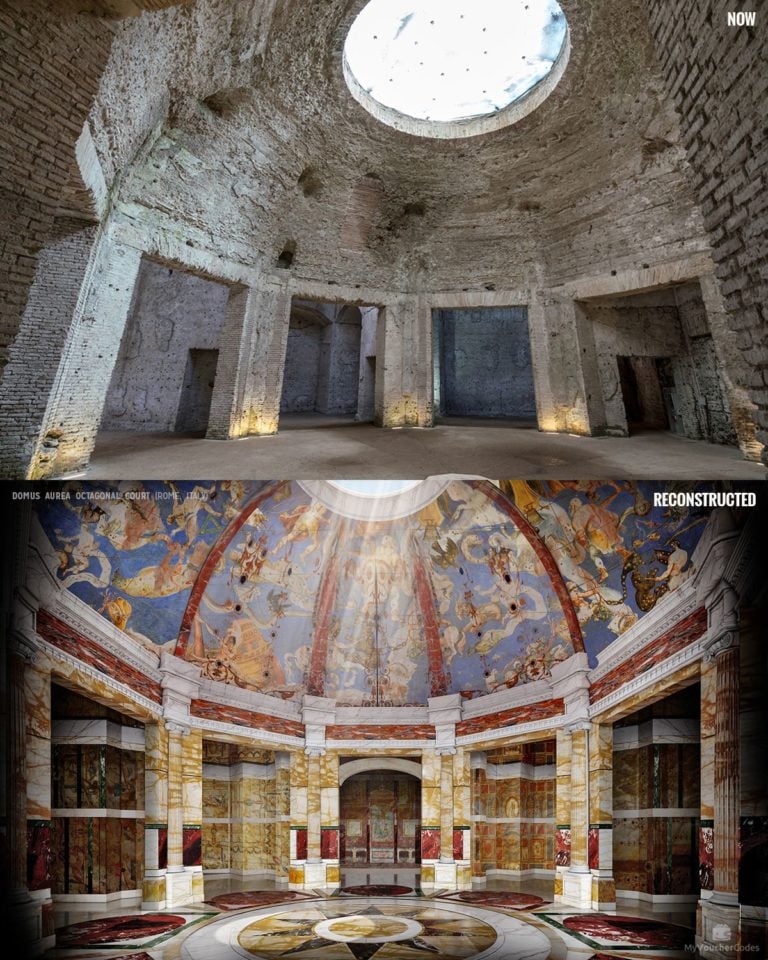
Constructed between 65 and 68 CE by one of Rome’s most notorious emperors, the eponymous Golden House of Nero was a lavish palace complex that played host to the emperor’s wild parties and banquets. The large, octagonal room had a concrete dome, most likely covered in glass mosaic. Roman historian Suetonius tells of a ‘circular banquet hall, which revolved incessantly, day and night, like the heavens.’ He describes gem-encrusted walls, ivory and mother-of-pearl decorations and ceilings that showered guests with flowers and perfumes. Sounds like the height of luxury.

According to Josephus Flavius, governor of Galilee, Herod the Great built the fortress of Masada between 37 and 31 BCE. It stands atop an isolated rock cliff overlooking the Dead Sea and is a place of undeniable majestic beauty. King Herod’s elegant, intimate residential palace consisted of three luxuriously built terraces. Here, the lower terrace, designed especially for entertainment and relaxation, is reimangined. It was surrounded by porticos, with walls covered in beautiful frescos of multi-colored geometric patterns. There was also a small private bathhouse.

These ruins were first discovered in 1859 and provide invaluable insight into the daily lives of the Pueblo people. Sprawled over 27 acres, the ruins boast more than 450 rooms and include a fully restored kiva. Built partly underground, the ‘great kivas’ were huge, round structures where people gathered to socialise, discuss important issues of the day or tuck into a communal feast. Visitors can find the restored kiva by walking the original trails that lead through the ruins. And if you can’t make it to New Mexico, this reconstruction should give you an idea of how this great civilisation lived.
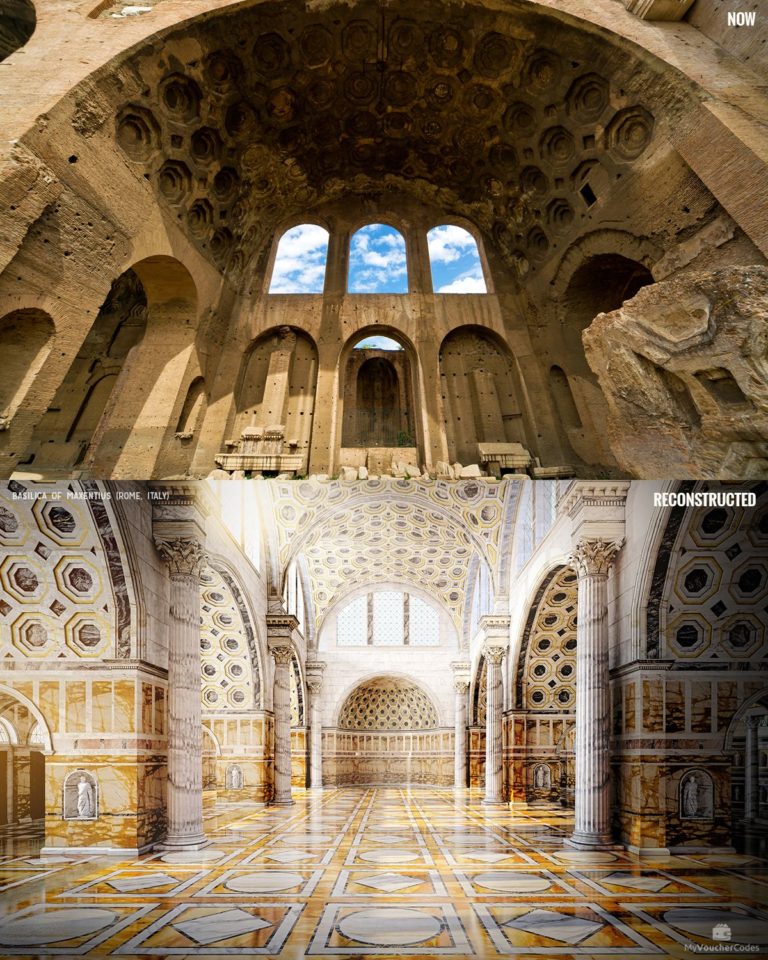
This majestic building in the Forum Romanum was the greatest of all the Roman basilicas. Covering 6,500 square metres, it acted as a meeting house, commercial area and administrative building. It was designed in a grand fashion fit for its prime location and importance to the Roman government and public. The spectacular Corinthian columns, multi-coloured marble floors and gilded bronze tile walls made this one of the most impressive buildings of Ancient Rome. The ornate details might have disappeared with time, but with this reconstruction you can get a sense of the basilica’s former opulence.

Estimated to have taken around 30 years to construct, this complex was originally a Hindu temple dedicated to the god Vishnu. It transitioned to a Buddhist temple towards the end of the 12th century and is believed to be the world’s largest religious building. From afar, Angkor Wat appears to be one enormous mass of stone. Once inside, however, visitors will find a series of elevated towers, porches and courtyards on different levels, linked by a series of stairways. One of Angkor Wat’s lush courtyards has been recreated, and looks like the perfect place for some mindful walking.
Images & captions courtesy of My Voucher Codes myvouchercodes.co.uk/rebuilt-and-reimagined



